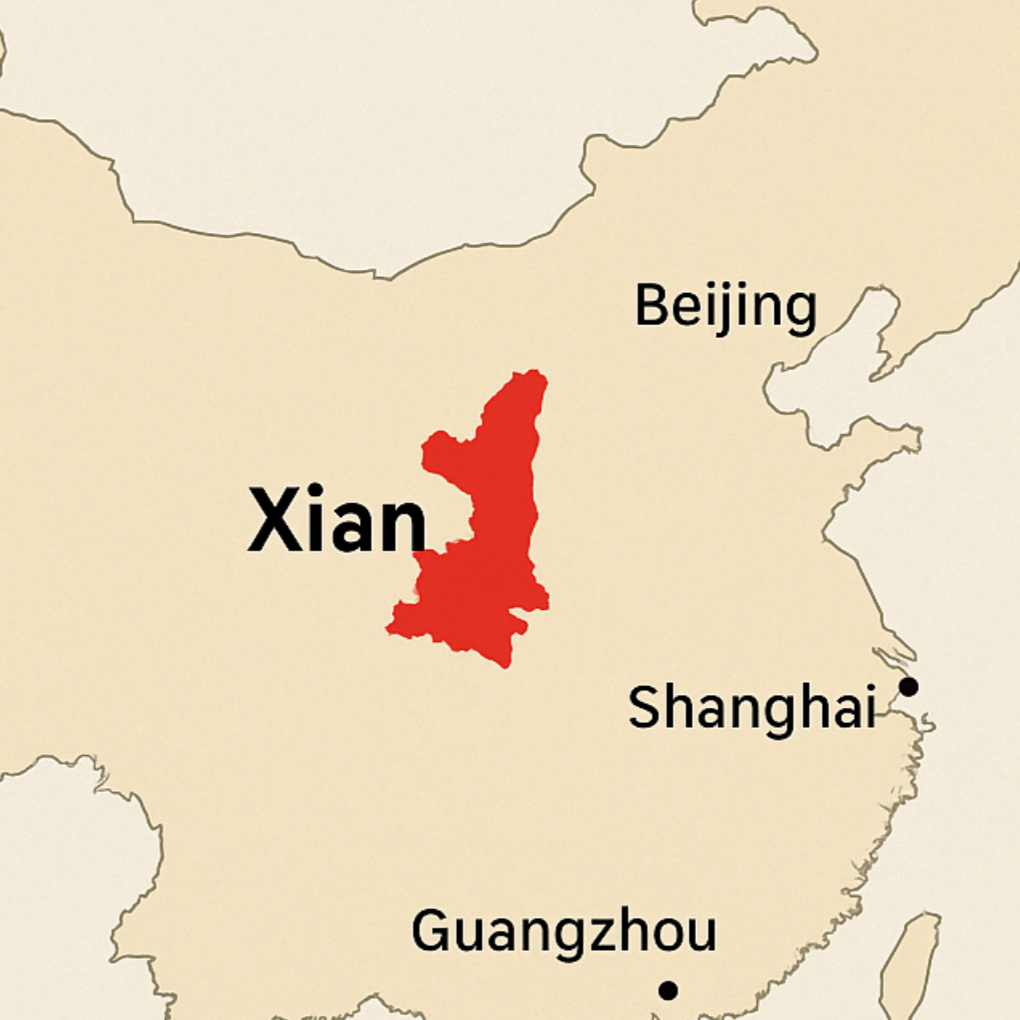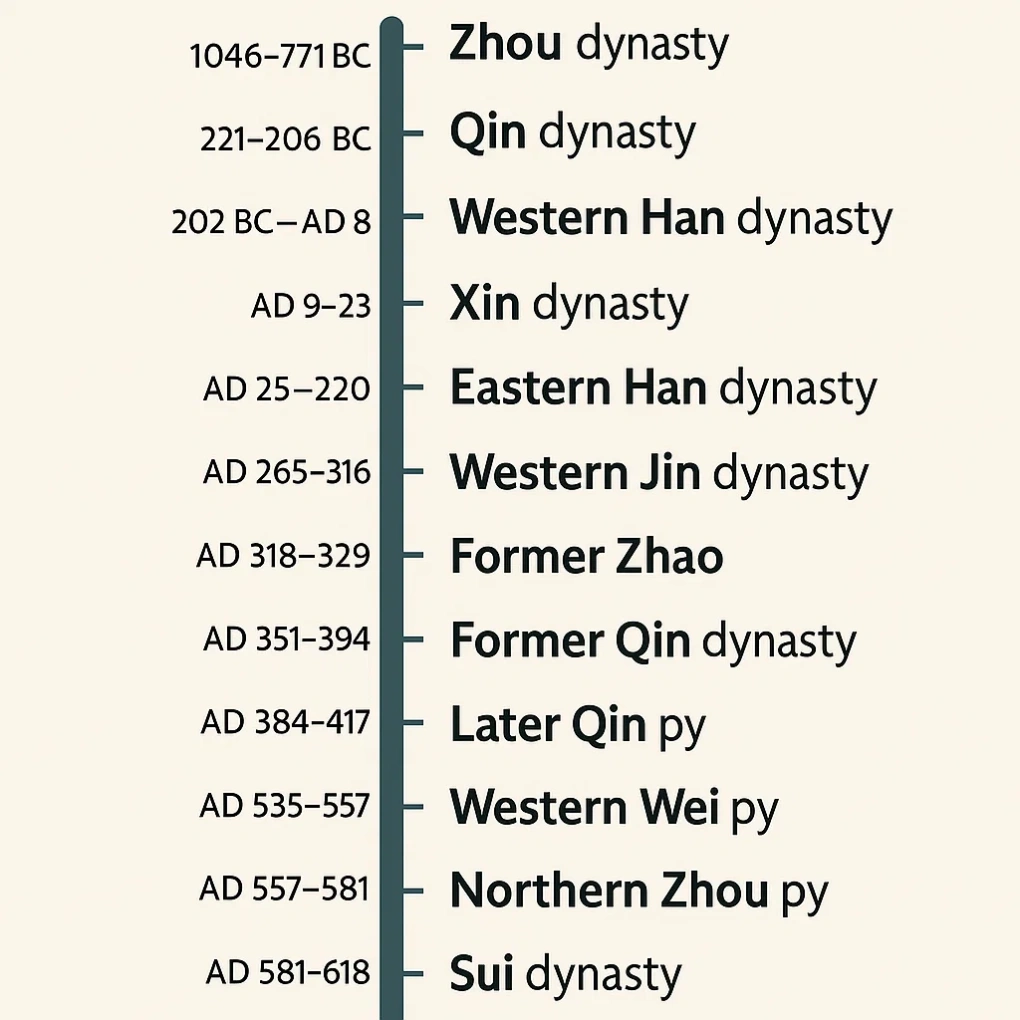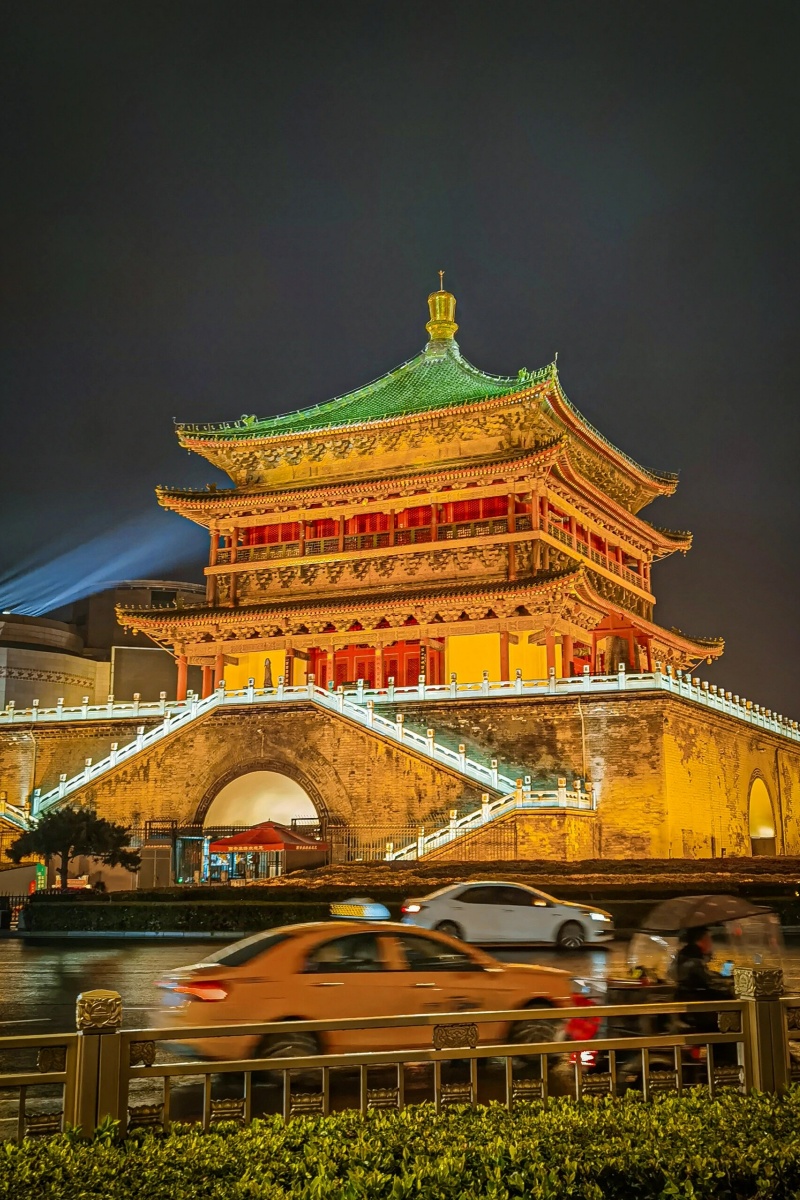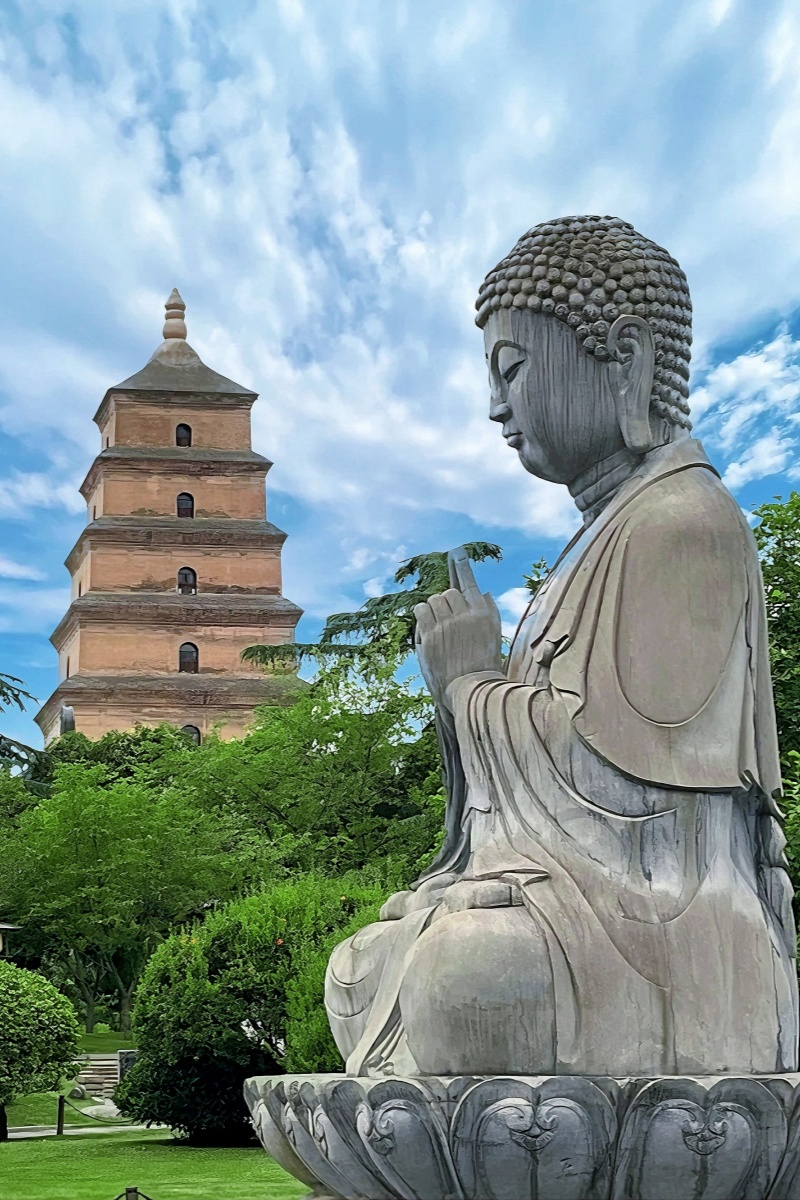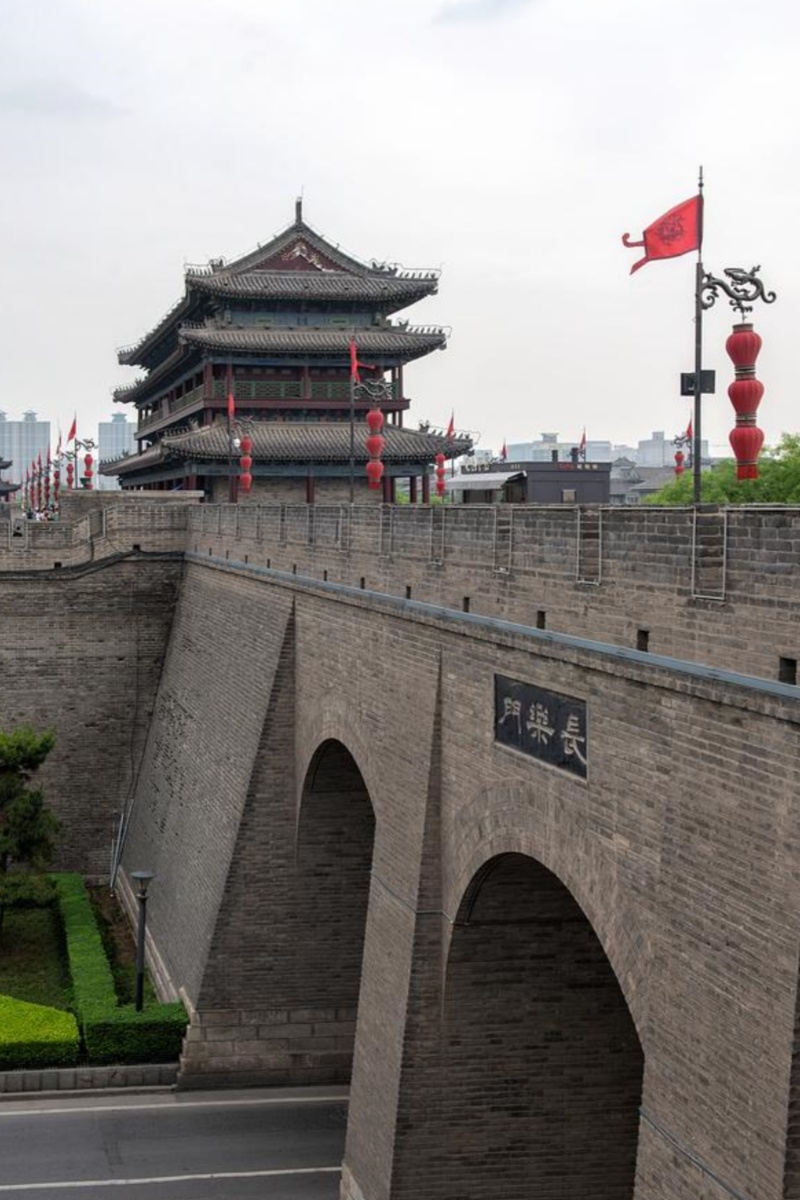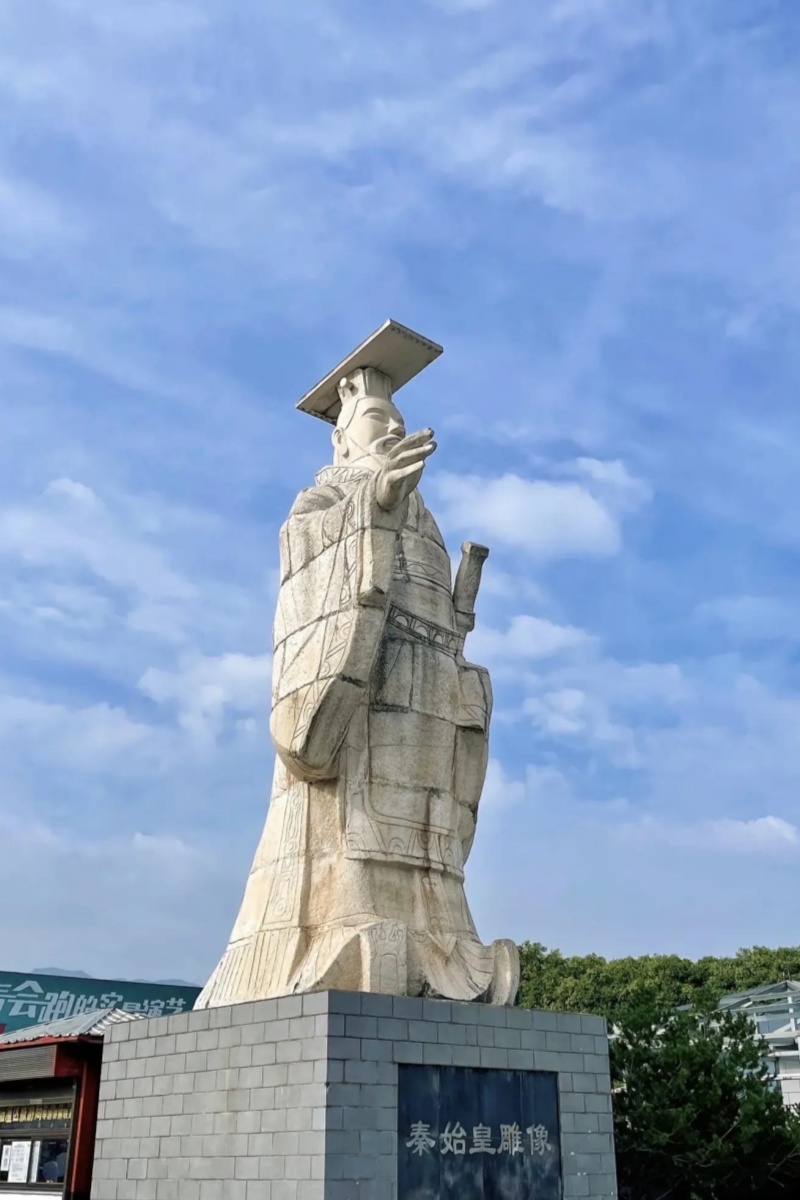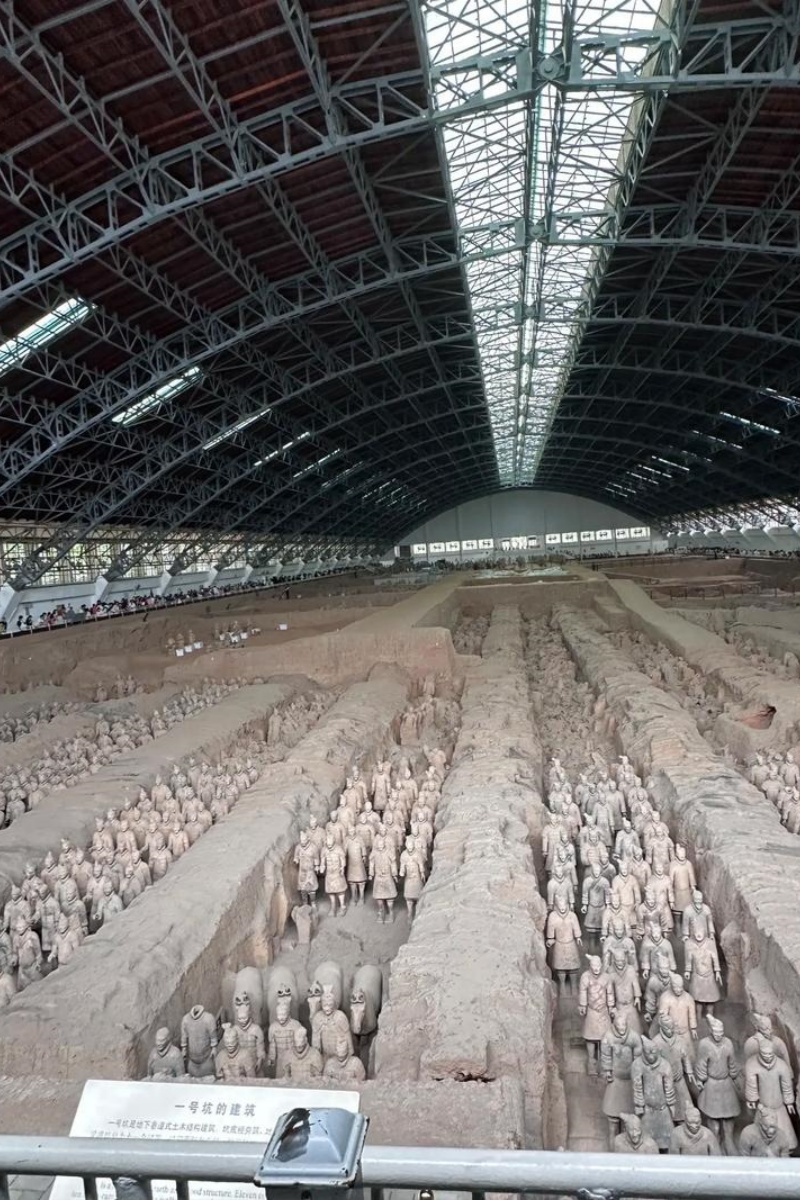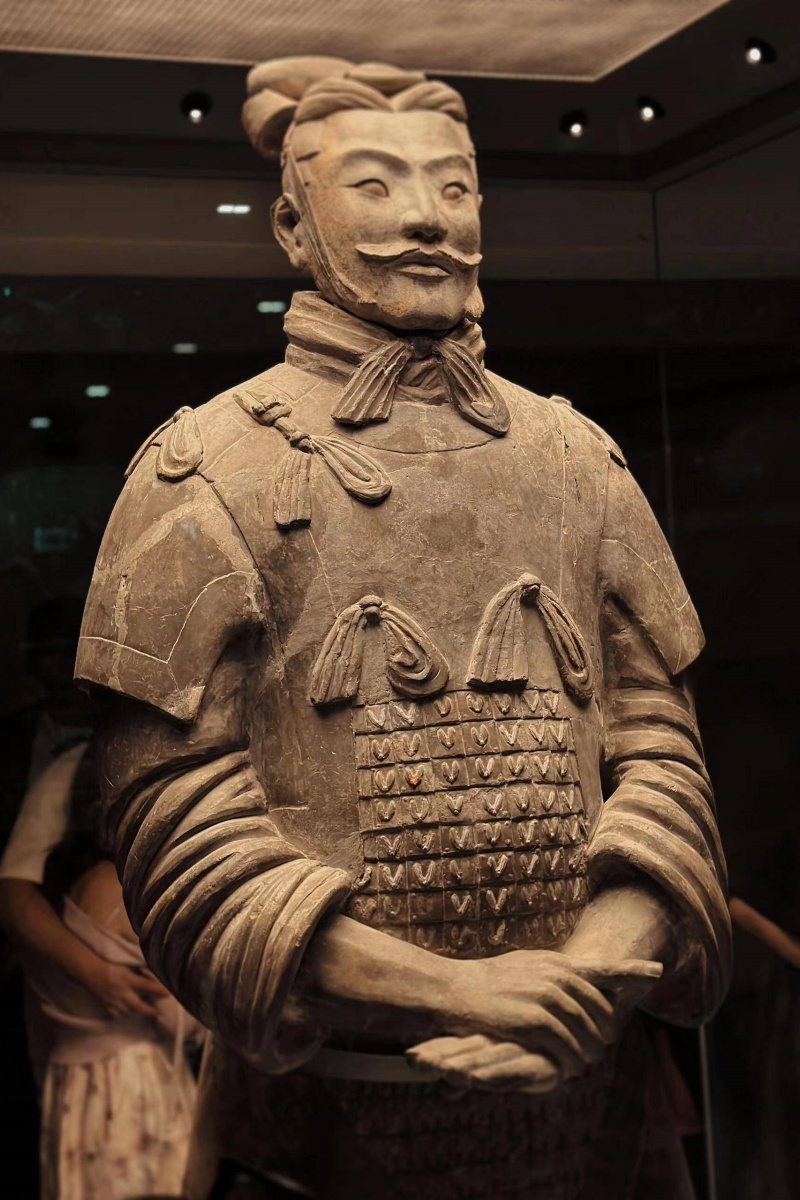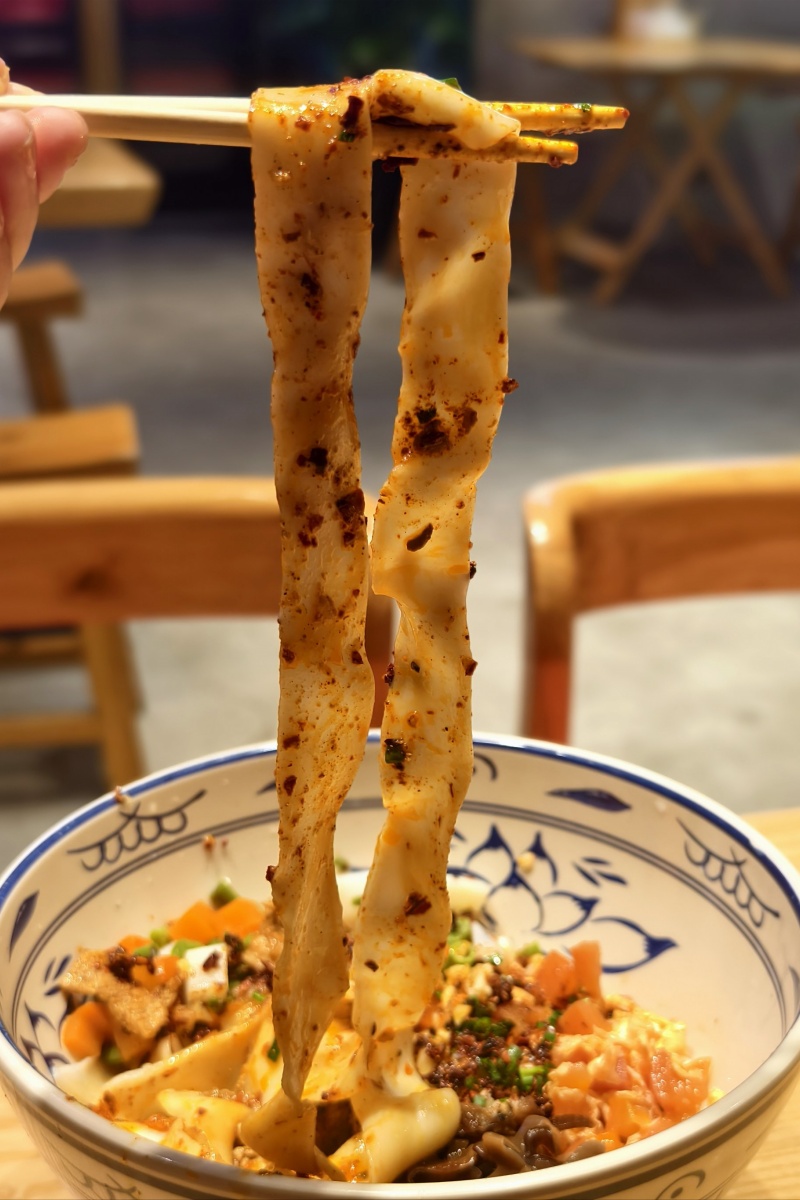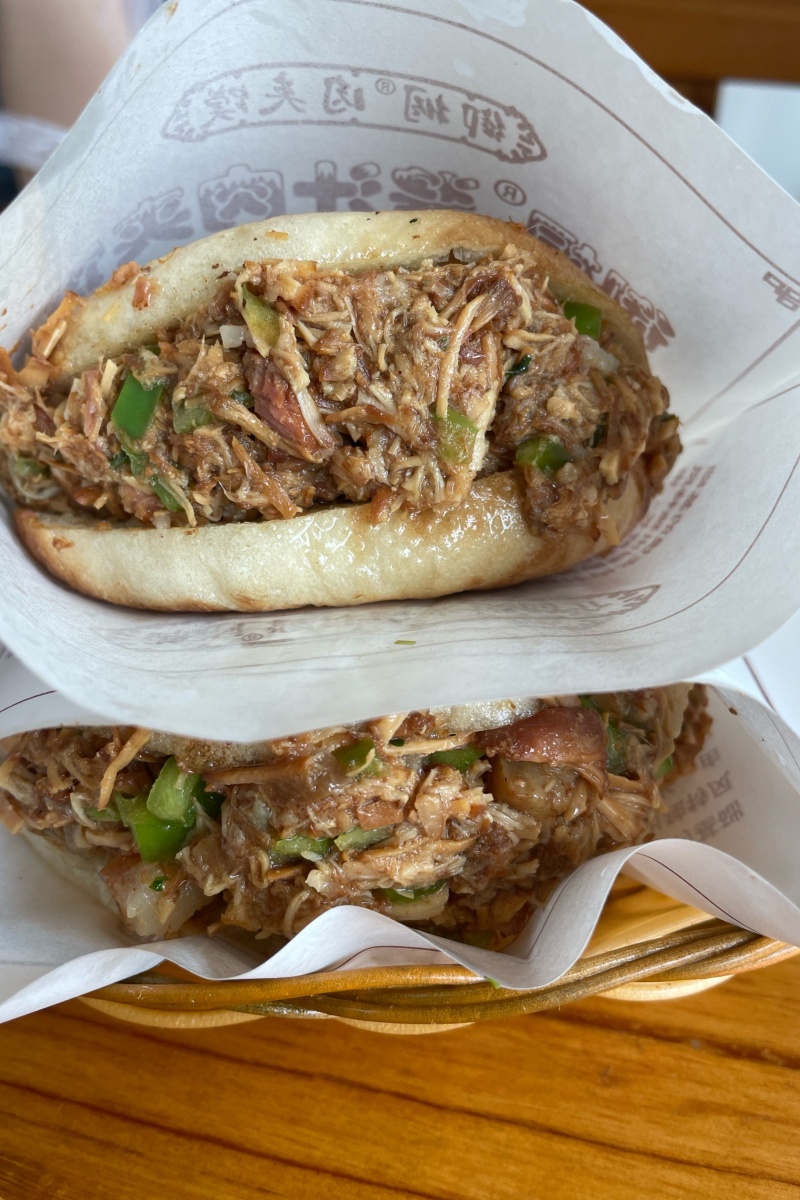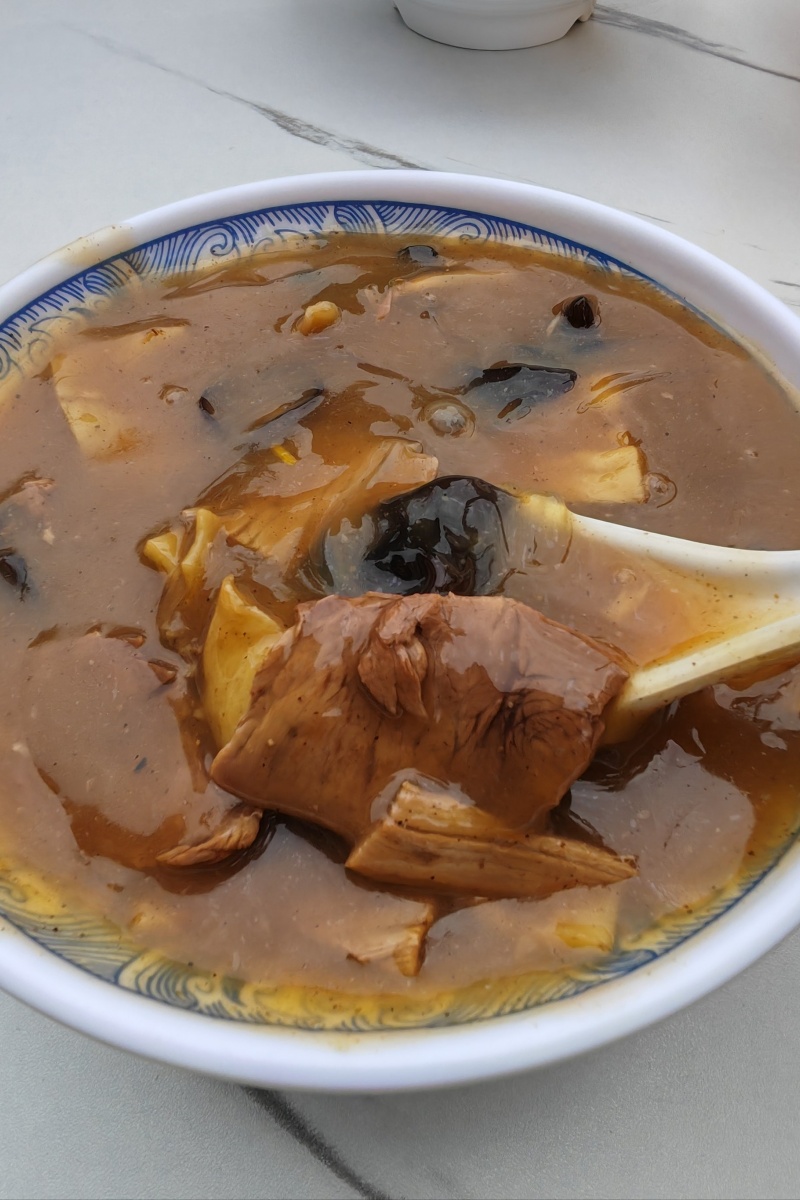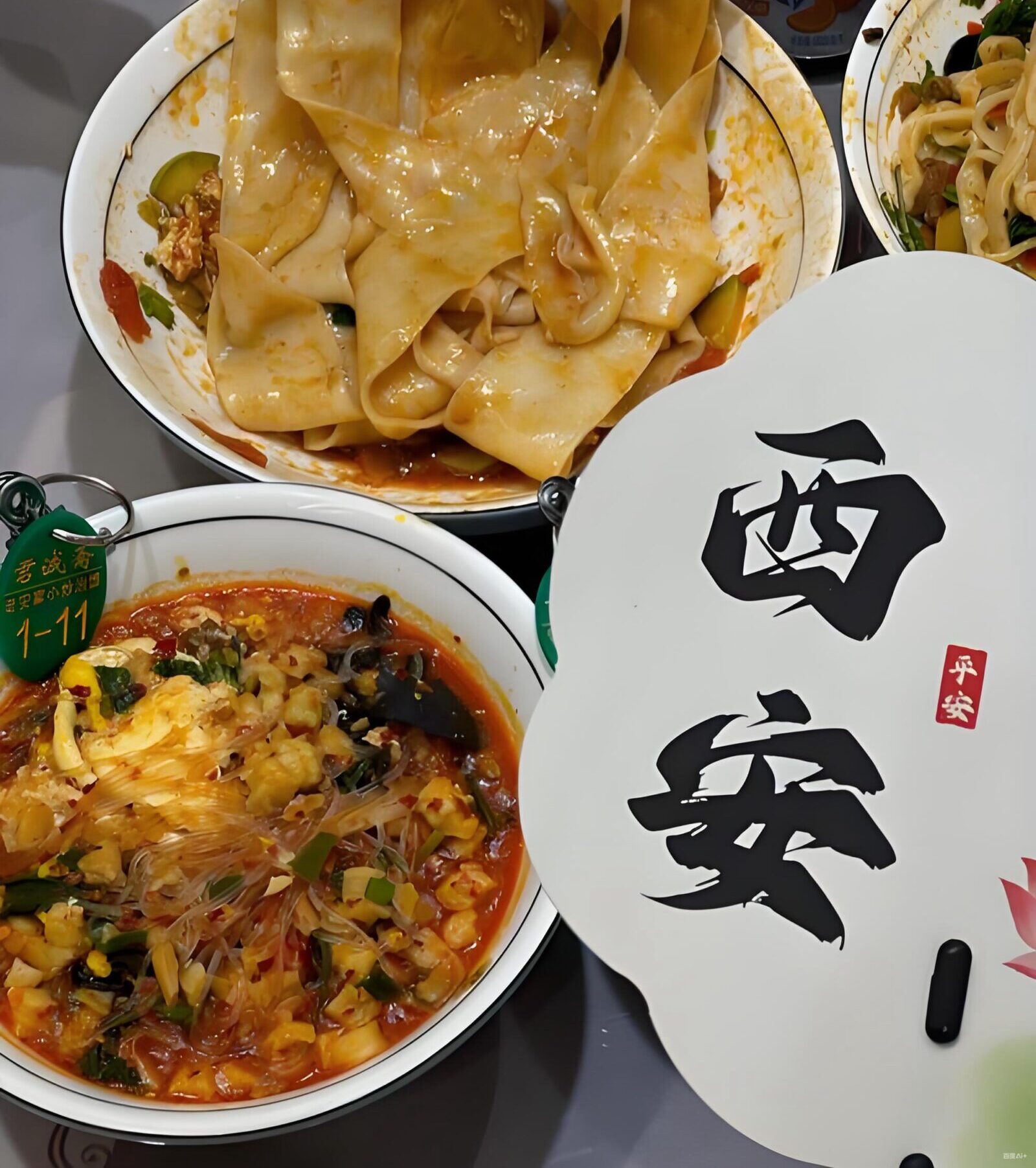Xian city isn’t just another stop on your China trip—it’s where history lives and breathes. Known as the heart of ancient dynasties, this city offers everything from towering pagodas to bustling night markets. Hungry for authentic flavors or eager to dive into centuries-old stories? Xian’s got you covered. This guide will show you the best sights, must-try foods, and places to stay that welcome foreign visitors. Let’s jump into what makes Xian city a must-see for any traveler in 2025.
Where Is Xian City and Why It Still Matters?
- Xi’an Location
- Timeline of Xi’an as the Capital of Thirteen Dynasties
Where You’ll Find Xian City on Today’s Map
Xian city sits almost dead center in China’s heartland. It’s the capital of Shaanxi Province, located on the Guanzhong Plain, just north of the Qinling Mountains and south of the Weihe River. This spot was no accident. The land is fertile, rivers surround it, and mountains shield it—basically, the perfect place for ancient emperors to settle and build dynasties. Today, Xian is a key inland hub, linking China’s western regions with the booming east.
Getting here is easier than ever. Xian Xianyang International Airport connects to over 50 international destinations and most major Chinese cities. The Xi’an North Railway Station is one of the busiest high-speed rail hubs in western China. Whether you’re flying in from Bangkok or riding a bullet train from Beijing, you’ll likely land in Xian in under 3 hours. And don’t worry—major hotels here accept foreigners, and most staff speak basic English or use translator apps to help.
The Birthplace of Ancient Dynasties – From Chang’an to Xian
You’ve heard of the Silk Road, but did you know it started in Xian city? This ancient capital, once known as Chang’an, was the heartbeat of dynasties like the Han and Tang. Long before Beijing and Shanghai rose to global fame, Xian was calling the shots—politically, culturally, and spiritually. Locals still call it the “cradle of Chinese civilization,” and honestly, they’re not exaggerating.
The shift from Chang’an to today’s Xian city wasn’t just a name change. It marked centuries of growth, destruction, and rebirth. The city has been the capital of 13 imperial dynasties—more than any other place in China. It hosted emperors, poets, monks, and merchants. Think of it as China’s version of Athens or Rome—only bigger and more lived-in.
What makes it even cooler for travelers? The past is still here. Walk down streets in the Muslim Quarter and you’ll spot Tang-style architecture. Climb the ancient City Wall and picture Tang warriors on patrol. In Xian city, history isn’t locked in museums—it breathes beside bubble tea shops and metro lines.
- Historical Capital of: Zhou, Qin, Han, Sui, Tang, etc.
- Local Nicknames: Chang’an, the Eternal Peace City
Why Is Xian City More Than Just a Former Capital?
Xian city holds a unique title in Chinese history—it served as the capital of 13 dynasties. From the Western Zhou to the Tang, rulers built their seats of power here, making Xian the longest-serving capital in China. The city was once called Haojing, then Xianyang, and most famously, Chang’an. At its peak during the Tang Dynasty, Chang’an was not only the political center of the empire, but also the world’s most international city. Poets, monks, traders, and diplomats walked its streets, leaving behind a legacy that still shapes Chinese identity today. More emperors ruled from Xian than from Beijing, Nanjing, or any other Chinese city—making it a true core of ancient China.
Why did so many dynasties choose Xian city as their capital? Geography played a key role. Sitting in the fertile Guanzhong Plain, protected by mountains and fed by rivers, Xian was easy to defend and rich in resources. It was the gateway between east and west, and the ideal command center for controlling inland China and Central Asia. The region’s deep cultural roots and strong infrastructure—from early palaces to sophisticated road systems—gave new rulers a solid foundation. Each dynasty left a mark, whether it was Qin’s unification, Han’s Silk Road, or Tang’s global influence. That’s why today, when you explore Xian city, you’re stepping through layers of imperial ambition, cultural brilliance, and historical pride.
What’s the Weather Like in Xian Year-Round?
Planning your trip to Xian city? Timing matters. This isn’t your tropical Southeast Asia climate—it’s continental all the way. Summers are hot and dry, with temperatures regularly hitting 35°C (95°F) in July. Winters get cold fast, especially in January when the mercury drops below freezing. But spring and autumn? Chef’s kiss. Think cherry blossoms in March and red maple leaves in October.
Dust storms can happen in early spring, especially in March. So if you’re allergic or sensitive, pack masks or stay indoors during high PM2.5 days. Most locals track pollution levels via WeChat mini apps. Oh, and bring layers—day-night temperature swings can hit 10°C (18°F) even in fall.
Pro tip: Visit in April or October. Fewer crowds, better weather, and clear skies for drone shots. Plus, major attractions like the Terracotta Army or Drum Tower feel less crowded. Trains and hotels are easier to book, and staff are less overwhelmed—meaning more chance someone speaks English or uses a translator app.
Famous Tourist Attractions You Can’t Miss in Xian City
- The Drum Tower
- The Big Wild Goose Pagoda
- Ancient City Wall
The Drum Tower Xian – Where Time and Music Meet
The Drum Tower in Xian city is more than an old building—it’s a heartbeat of history. Dating back to 1380 AD, it marked time for locals before smartphones and watches. Built during the Ming Dynasty, this tower was where drums signaled dawn, dusk, or emergencies. Think of it as an ancient version of New York’s Times Square ball drop, but with booming drums instead of digital countdowns.
You can climb up the tower and view the city’s rooftops, old and new. Inside, there’s a museum of ancient drums, each carved with mythical beasts or traditional motifs. The structure is a mix of wood and brick, and its roof is a stunning blend of green-glazed tiles and sweeping eaves. Every few hours, you’ll catch a traditional drum show—seriously, don’t miss it. The performance lasts about 15 minutes and feels like thunder rolling through your chest.
Tickets cost 35 RMB and can be booked on Ctrip The tower is right in the heart of the city, near the Muslim Quarter. So yes, you can time your visit to hear the drums and then walk five minutes to grab a roujiamo. It’s open 8:30 AM to 9:30 PM in high season, and most staff at the entrance speak basic English.
Big Wild Goose Pagoda & Tang Culture Revival
The Big Wild Goose Pagoda isn’t just a photo spot—it’s a spiritual icon. Built in 652 AD during the Tang Dynasty, it once stored Buddhist scriptures brought from India by the monk Xuanzang, the real-life figure behind the Monkey King story in Journey to the West. So yes, if you're into Chinese legends, this is holy ground.
The pagoda stands 64 meters tall, with a square base and seven tiers. It leans slightly, but don’t worry—it’s stable. The surrounding square is where Xian city goes full Tang-style at night. There’s a free fountain light show every evening around 8 PM, with music and visuals that feel like a Disney-meets-dynasty moment. Nearby, Tang Paradise Park offers dance performances in traditional hanfu and even night markets with old-school calligraphy and sword shows.
Entrance to the pagoda area costs 50 RMB, and climbing to the top requires an extra 30 RMB.English signage is solid, and guided tours are available, often with multilingual headsets. This place brings Tang culture to life—far more than just bricks and incense.
Ancient City Wall – Ride, Walk or Just Gaze
The Ancient City Wall in Xian city is a walkable time machine. Built in the 14th century and stretching 13.7 kilometers, it's the most complete city wall in China. You can rent a bike and ride the entire loop in about 90 minutes, stopping for skyline selfies and red lantern shots.
Most locals walk a section at sunset, when shadows stretch over the ramparts and red flags flap in the breeze. You’ll pass old watchtowers, arrow holes, and dramatic gates. Think of it like Rome’s Colosseum meets the Great Wall—just flat and much easier on your legs. Some spots even have art installations or cultural pop-ups that change with the season.
Entry is 54 RMB, and bike rental starts from 45 RMB per two hours. You’ll need a passport to register for rental, but they’re foreigner-friendly and staff are helpful.
The Terracotta Army in Xi’an: More Than Just Clay Figures
- Statue of Emperor Qin Shi Huang
- Terracotta Army – Pit 1
- Terracotta Army
From Farmer’s Field to World Fame – The 1974 Discovery
It all started with a thirsty farmer. In 1974, while digging a well outside Xian city, a villager hit something hard. That “rock” turned out to be the head of a 2,000-year-old warrior. What followed was one of the most important archaeological finds of the 20th century—the Terracotta Army.
The figures were built to guard China’s first emperor, Qin Shi Huang, in the afterlife. Each warrior has a unique face, hairstyle, and armor. There are over 8,000 soldiers, plus horses, chariots, and even acrobats. It’s like Egypt’s tombs crossed with a Marvel movie set—massive, mysterious, and surreal. UNESCO called it a “masterpiece of realism” when listing it in 1987.
Since then, this site has put Xian city on the global map. Tourists from every continent fly in just for this. Even Obama visited in 2009. It’s not just clay—it’s power, politics, and belief frozen in time. Don’t rush through it. Walk slowly. Let the silence talk.
- Location:The Museum of Qin Shi Huang’s Terracotta Army in Lintong District
- Entry fee: 120 RMB (low season), 150 RMB (high season)
- Open: 08:30–17:00 (Mar–Nov), 08:30–16:30 (Dec–Feb)
Tips for Visiting the Terracotta Army Like a Pro
First tip—go early. Crowds hit hard after 10 AM. Catch the first subway or hire a Didi taxi from downtown Xian city (about 1 hour, 80–100 RMB). There are three pits to explore—Pit 1 is the largest, with rows of standing soldiers. Start there.
Bring a jacket. The museum halls are huge and often chilly. Don’t rely on phone data—Wi-Fi is spotty, so download an offline translation app. Photography is allowed without flash, but drones are banned. Don’t just look at the warriors—read the wall panels or use the official audio guide, which is better than most private ones.
Want lunch? Try the museum restaurant or bring snacks. Nearby food is touristy and overpriced. Need a souvenir? Skip the clay knockoffs. Head to the gift shop for licensed mini statues—better quality, same vibe. If you use Trip.com or Klook, look for combo deals with shuttle bus tickets.
Is a Guided Tour Worth It? When to Book One
Short answer: Yes. Unless you’re a Chinese history buff, a guide helps make sense of the massive site. Guided tours often include skip-the-line access, stories behind specific generals, and even restoration zones that solo travelers can’t reach. It’s like watching a movie with subtitles—you’ll actually get what’s happening.
You can book online in English. Options include private guides (more flexible) or group tours (cheaper). Prices range from 180 RMB to 450 RMB, depending on service. A good guide will explain the emperor’s obsession with immortality, why each warrior’s ears differ, and how the figures were originally painted in bright colors—a fact most tourists miss.
Prefer going solo? Rent the official headset (about 40 RMB). It’s solid and synced with QR codes around the site. Some platforms like Klook offer one-day tours from Xian city including transportation, lunch, and entry. It’s hassle-free and foreigner-friendly. Just check if they allow foreign passport pickup in-app—some do, some don’t.
Planning a bigger trip? Here’s our full guide to China’s top historical sites.
How Many Days Are Enough in Xian City?
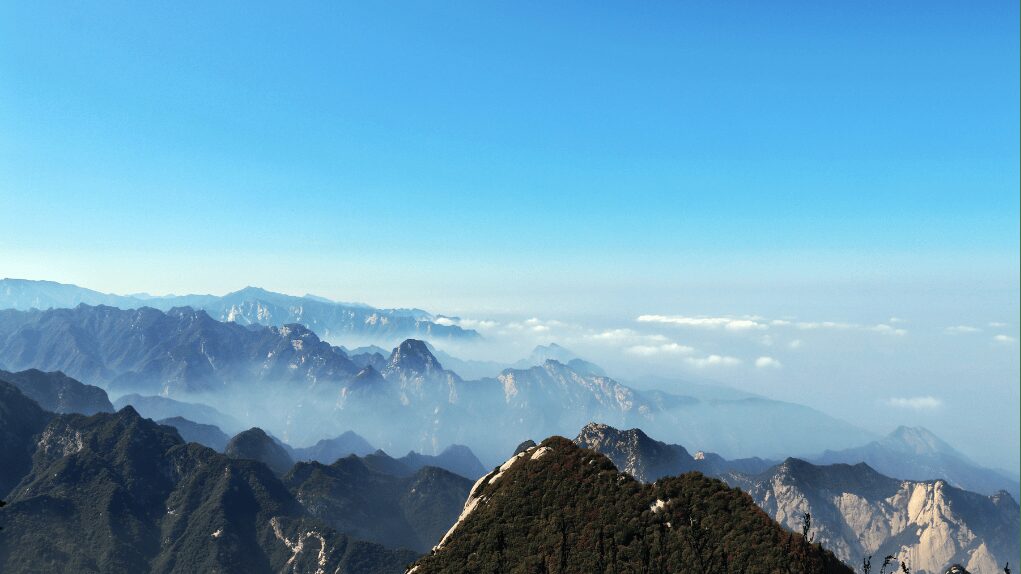
Mount Huashan
One Perfect Day in Xian: Explore History, Culture & Nightlife
Start your day at the Drum Tower, where the deep drumbeats once kept time for the ancient city. Climb up for panoramic views of old and new Xian city. Just nearby, the Bell Tower stands tall—a perfect photo spot and a glimpse into the city’s heart.
Next, bike along the Ancient City Wall for about 14 kilometers. This ride lets you see historic watchtowers side-by-side with gleaming skyscrapers. After the ride, head to the majestic Big Wild Goose Pagoda, a symbol of Buddhist culture. Surrounding the pagoda is a peaceful park with fountains and sculptures, perfect for a relaxing stroll. Don’t miss the nightly light and music show here—locals swear it’s magical.
As evening falls, visit the buzzing Datang Everbright City (Tang Paradise). This lively pedestrian street blends Tang dynasty style with modern shops, restaurants, and street performances. Lanterns glow overhead while vendors sell everything from snacks to souvenirs. Wrap up your day in the nearby Muslim Quarter, sampling famous local eats like roujiamo and liangpi, and soaking in the vibrant atmosphere under twinkling lights.
- Big Wild Goose Pagoda light show: Free
- Datang Everbright City entrance: Free
- Muslim Quarter food budget: 50–100 RMB
Two Days in Xian City: Add the Terracotta Army
With two days, dedicate your second day to the legendary Terracotta Army in nearby Lintong district. The site lies about 40 kilometers from xian city’s center, reachable by a roughly one-hour taxi or shuttle bus. Plan to arrive early to avoid crowds and enjoy the vast pits of clay warriors.
After exploring the army, head to Huaqing Palace and Lishan Mountain, both close by. The palace was an imperial hot spring retreat, rich with Tang dynasty history. You can also catch the “Song of Everlasting Regret” show in the evening, a dramatic outdoor performance telling the famous love story of Emperor Xuanzong and Yang Guifei.
Tickets for the army cost 120–150 RMB, and the show starts at 8:30 PM with prices from 298 RMB. Booking online in advance is recommended. This second day immerses you deeply in xian city’s ancient history and culture outside the urban center.
Three Days or More: Take on Mount Huashan
If you have three days or more, add a thrilling day trip to Mount Huashan, known for its breathtaking cliffs and spiritual significance. From xian city, high-speed trains run to Huashan North Station in about 30-40 minutes. A shuttle bus connects you to the mountain entrance.
Hiking options range from cable car rides to steep trails, including the famous plank walk. Bring proper gear and be prepared for changing weather; mountain temperatures differ from the city. Entrance and cable car tickets total about 320 RMB. Overnight stays on the mountain are possible but need advance booking, especially for foreign visitors.
This day offers a refreshing escape from city life and a chance to see one of China’s most iconic natural wonders, rounding out your xian city adventure.
What Should You Eat in Xian City? Local Food You’ll Crave Again
- Biangbiang Noodles
- Roujiamo
- Hu la tang
The Iconic Biangbiang Noodles – More Than a Tongue Twister
Biangbiang noodles are a legendary dish in xian city, famous not only for their chewy texture but also for their complex name. The word “biang” is actually one of the most complicated Chinese characters, and locals love showing it off. These wide, thick noodles are hand-pulled with skill, giving them a satisfying bite that’s hard to find anywhere else. Served with a spicy chili oil, garlic, and vinegar sauce, the flavors hit just the right balance of heat and tang. It’s no wonder locals swear by these noodles as a comfort food. For authentic biangbiang, try places like Lao Mi Jia or Zhi Liang Restaurant, where the recipes have been passed down for generations. Both spots offer an unpretentious atmosphere where you can savor every slurp of this iconic xian city dish.
Roujiamo, Liangpi & More – Street Food Heaven in the Muslim Quarter
The Muslim Quarter is a must-visit for any foodie exploring xian city. Here, you’ll find mouthwatering street eats like roujiamo, often called the Chinese burger, with its savory chopped meat stuffed inside freshly baked flatbread. Another favorite is liangpi, cold wheat noodles served with cucumber, bean sprouts, and a tangy, spicy sauce—perfect for cooling off on a hot day. Don’t miss hu la tang, a peppery soup packed with flavor and warming your soul. The best time to visit the Muslim Quarter is late afternoon through evening when vendors set up their stalls and the night market buzzes with life. For convenience, many food maps and apps highlight the best stalls and their specialties. This vibrant area offers a true taste of xian city’s culinary heart, where every bite tells a story.
- Recommended biangbiang noodle shops: Lao Mi Jia, Zhi Liang Restaurant
- Best visiting hours for Muslim Quarter: 4 PM – 10 PM (night market peak)
- Typical food budget: 50–120 RMB
Where to Stay in Xian City: Hotels That Welcome Foreign Travelers

Sofitel Legend People’s Grand Hotel
Luxury Hotels in Xian City: Comfort Meets Tradition
If you want to indulge during your stay in xian city, luxury hotels like the Sofitel Legend People’s Grand Hotel are hard to beat. Located near the Ancient City Wall, this hotel perfectly blends traditional Chinese architecture with modern amenities. Guests praise its attentive English-speaking staff, elegant rooms, and top-notch service. After a day exploring the city, relaxing in the spa or dining at their gourmet restaurants is a perfect way to unwind. Prices here usually range from 600 to 800 RMB per night, making it a great choice for travelers seeking comfort and culture.
Mid-Range Hotels: Affordable and Convenient
For travelers looking for a balance between price and comfort, xian city offers many mid-range hotels. The Grand Noble Hotel is popular for its clean rooms, friendly staff, and convenient location close to the Bell Tower. Many of these hotels provide English signage and helpful front desk services, which makes navigation easier for foreign visitors. Prices usually fall between 300 and 600 RMB per night. With easy access to metro stations and taxis, these hotels provide a smooth base for sightseeing and dining.
Budget-Friendly Hostels: Meeting Fellow Travelers
Backpackers and budget-conscious visitors will find plenty of hostels in xian city. The Xi’an City Wall Youth Hostel is well-known for its clean facilities and welcoming atmosphere. Dormitory beds and private rooms are both available, often priced below 200 RMB per night. Located near the city wall, it offers easy access to major sights. Many hostels also organize group tours or social events, making it easier to meet other travelers and get insider tips on the city.
Frequently Asked Questions (FAQs)
Q: What’s the best way to visit the Terracotta Army without wasting time?
A: Arriving early is key to avoiding the crowds at the Terracotta Army. The site opens at 8:30 AM; try to get there right when it opens. Using a Didi taxi or a shuttle bus from downtown Xian city is efficient and affordable. Start your visit at Pit 1, the largest and most impressive area. Take your time soaking in the details of the warriors and chariots. Don’t rush to see everything; instead, focus on highlights. Consider renting an official audio guide headset. It offers detailed stories and explanations without crowding. Also, bring snacks or eat beforehand, as food options onsite are limited and pricey. Booking tickets online through trusted platforms like Trip.com can save you waiting time. If possible, avoid weekends and Chinese holidays for a quieter experience. This approach ensures you see the Terracotta Army like a pro without feeling overwhelmed.
Q: Is English widely spoken in hotels and restaurants in Xian city?
A: English proficiency varies, but many hotels and restaurants catering to tourists have English-speaking staff. Luxury hotels, such as the Sofitel Legend People’s Grand Hotel, consistently offer fluent English services. Mid-range hotels usually have some staff who understand basic English and use translation tools when needed. In popular tourist restaurants, menus often include English or pictures, helping non-Chinese speakers order easily. Street food stalls in the Muslim Quarter may have limited English, but locals are friendly and can use gestures or apps to communicate. It’s helpful to learn a few basic Mandarin phrases or carry a translation app. Many places also accept payments through apps with English interfaces, like Alipay or WeChat Pay. Overall, communication is usually manageable for foreigners, especially in central areas. Travelers praise Xian city’s growing hospitality industry for accommodating international guests.
Q: What’s the food scene like for vegetarians in Xian city?
A: Xian city has more vegetarian options than you might expect, though you’ll need to look a bit. Traditional Chinese cuisine includes lots of plant-based dishes, especially cold appetizers like marinated cucumber, spicy tofu, or mushroom salad. Roujiamo and liangpi usually contain meat, but some stalls offer vegetarian versions—just ask or point to veggies. Buddhist restaurants in the city center serve full vegetarian menus, often with mock meats made from tofu or wheat gluten. These places are clean, affordable, and usually have English menus. Inside malls, you’ll find modern vegetarian spots with fusion food, fresh juices, and salads. Hot pot restaurants also let you build your own veggie-friendly pot with mushrooms, lotus root, greens, and tofu. Use a translation app to confirm ingredients if unsure—sometimes “vegetarian” dishes use meat broth. Finally, the international area around Xiaozhai has cafes serving vegan desserts and plant-based Western dishes. So yes, eating vegetarian in Xian city isn’t hard if you plan ahead a little.
Q: How long does it take to get from Beijing to Xian city?
Getting from Beijing to Xian city is straightforward—take a high-speed train for around 4.5 to 6 hours, departing from Beijing West and arriving at Xian North Station. It’s comfortable, scenic, and easy to book online with your passport. Flights are faster in the air (about 2 hours), but with airport check-ins and transit, the total time ends up similar—around 5 to 6 hours. Most travelers prefer the train for convenience, especially since both stations are well connected to metro lines.
Q: What are the best day trips from Xian city for travelers?
Xian city offers fantastic day trips just beyond its walls. Head to Mount Huashan for dramatic cliffs and cable cars—it’s only 40 minutes by train. For Tang dynasty vibes, visit Huaqing Palace and catch the “Song of Everlasting Regret” show nearby. If you're into spiritual sites, Famen Temple is a peaceful escape about 1.5 hours away, home to ancient relics and stunning modern halls. All spots are easy to reach and worth the journey.
Q: Is it easy to use public transportation to reach Big Wild Goose Pagoda?
A: Absolutely. The Big Wild Goose Pagoda is well connected by Xian city’s metro system. Line 3 stops right at the Pagoda station, and the area is well signposted in English. From downtown, the metro ride takes about 20-30 minutes, depending on your starting point. Trains run frequently from early morning to late evening, and tickets cost around 2-4 RMB. The station has elevators and signage suitable for foreign visitors. Walking around the Pagoda park is straightforward, with clear paths and English info boards. Nearby, you’ll find cafes and souvenir shops with English labels. The metro is affordable, clean, and foreigner-friendly, making it the easiest way to visit this iconic site without taxi hassle.
Q: What are the main differences between Xian city and Beijing or Shanghai?
A: Xian city feels like a living museum, rich in ancient history and traditional culture. Unlike Beijing’s political buzz or Shanghai’s modern skyline, Xian offers a deep dive into China’s imperial past with sites like the Terracotta Army and the Ancient City Wall. The pace here is slower, and the city is smaller, which makes exploring easier and less overwhelming. Food in Xian is distinct—famous for spicy noodles and hearty street snacks, quite different from Beijing’s roast duck or Shanghai’s sweet flavors. Also, Xian’s architecture preserves Tang dynasty styles more visibly, while Beijing mixes old imperial palaces with government buildings, and Shanghai shines with futuristic skyscrapers. If you want to soak in traditional China, Xian is your spot; for business and nightlife, Beijing and Shanghai lead the way.
Want more China travel ideas? Check out our city guides on Beijing, Shanghai, Guangzhou, and Chengdu.
